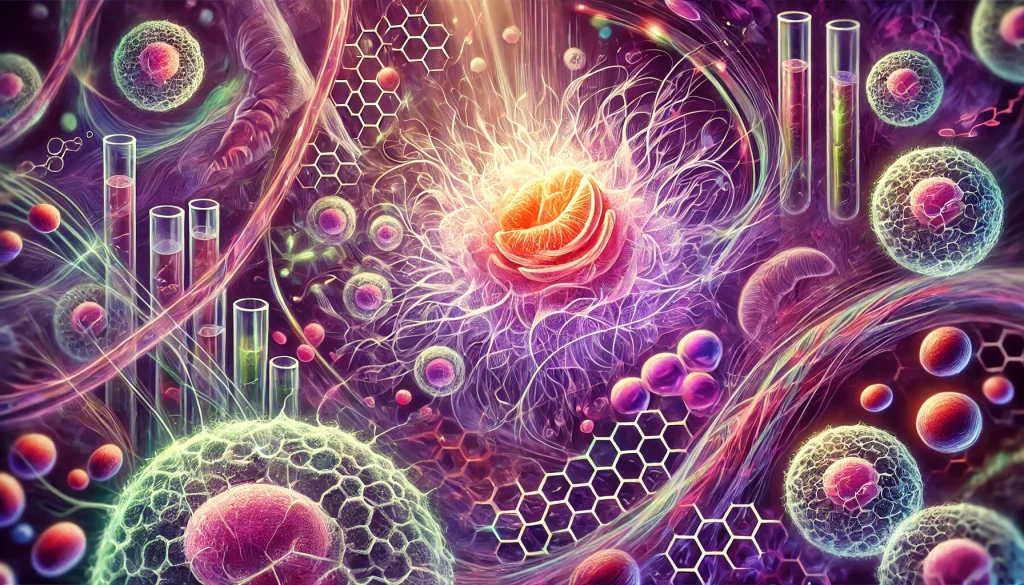Stem Cell Rejuvenation: A New Frontier in Combating Aging
Stem cell rejuvenation has long been a tantalizing prospect in the quest to combat aging. A recent study published in the World Journal of Stem Cells sheds new light on this topic, suggesting that rejuvenating old tissue stem cells could help maintain organ function and potentially reverse aging phenotypes. This study explores how biochemical cues and signaling pathways can recalibrate the environment where stem cells reside, effectively turning back the clock on aging cells.
The study highlights several key pathways involved in the aging process, including Notch/Delta, Wnt, transforming growth factor-β (TGF-β), JAK/STAT, and mammalian target of rapamycin (mTOR). These pathways regulate tissue stem cell function and their interactions with their niches, or the microenvironments where they reside. By modulating these pathways, researchers have demonstrated the potential to rejuvenate stem cell function, leading to broader organismal rejuvenation.
One of the most intriguing aspects of this study is the use of plasma fractions to control age phenotypes. Historically, experiments like heterochronic parabiosis, where the circulatory systems of young and old animals are joined, have shown that young blood can rejuvenate old tissues. This study builds on that foundation by identifying specific signaling pathways and factors in the blood that can either promote youthfulness or accelerate aging.
For instance, the study found that factors like TGF-β and Wnt signaling increase with age and can deteriorate muscle regeneration. Conversely, activating pathways like Notch and Delta can restore regenerative potential in old muscle. This aligns with findings from a Columbia University study that showed a fasting-refeeding paradigm could rejuvenate old blood stem cells by inducing autophagy, a cellular recycling process. The Columbia study emphasized that while fasting alone can induce autophagy, resumption of feeding is necessary to fully rejuvenate blood stem cell function.
The potential of stem cell rejuvenation extends beyond just muscle and blood. Recent advancements have shown promising results in other areas as well. For example, a clinical trial in East Shanghai found that administering umbilical cord-derived mesenchymal stem cells reduced frailty in older people. Another study demonstrated that transplanting mitochondria improved muscle function in aged mice, highlighting the multifaceted approach needed to tackle aging.
However, the road to effective organismic rejuvenation is fraught with challenges. The study cautions that while modulating these pathways can rejuvenate stem cells, it also carries risks like potential carcinogenic actions. Long-term activation of pathways like Notch or downregulation of TGF-β and Wnt signaling has shown success in rejuvenation but also resulted in side effects such as oncogenic transformation and immune deregulation.
Interestingly, the study also explores the idea of using natural sources like phytochemicals and flavonoids to target these pathways. Compounds like resveratrol and curcumin have shown potential in modulating pathways involved in aging, such as NF-κB, mTOR, and PI3K/Akt. These natural agents could offer a safer alternative to synthetic drugs, although more research is needed to confirm their efficacy and safety.
The concept of rejuvenating stem cells by altering their environment is not entirely new. Previous studies have shown that exposing old tissues to a young environment can reverse aging phenotypes. For example, heterochronic parabiosis experiments have demonstrated that young blood can rejuvenate old neural and muscle stem cells. This study builds on those findings by identifying specific factors and pathways that can be targeted to achieve similar results without the need for invasive procedures.
The recent study in the World Journal of Stem Cells provides a comprehensive overview of the potential and challenges of stem cell rejuvenation. By understanding and modulating the signaling pathways involved in stem cell aging, researchers hope to develop therapies that can slow down or even reverse the aging process. While there are still many hurdles to overcome, the insights gained from this study and others like it bring us one step closer to unlocking the secrets of aging and achieving healthier, longer lives.

